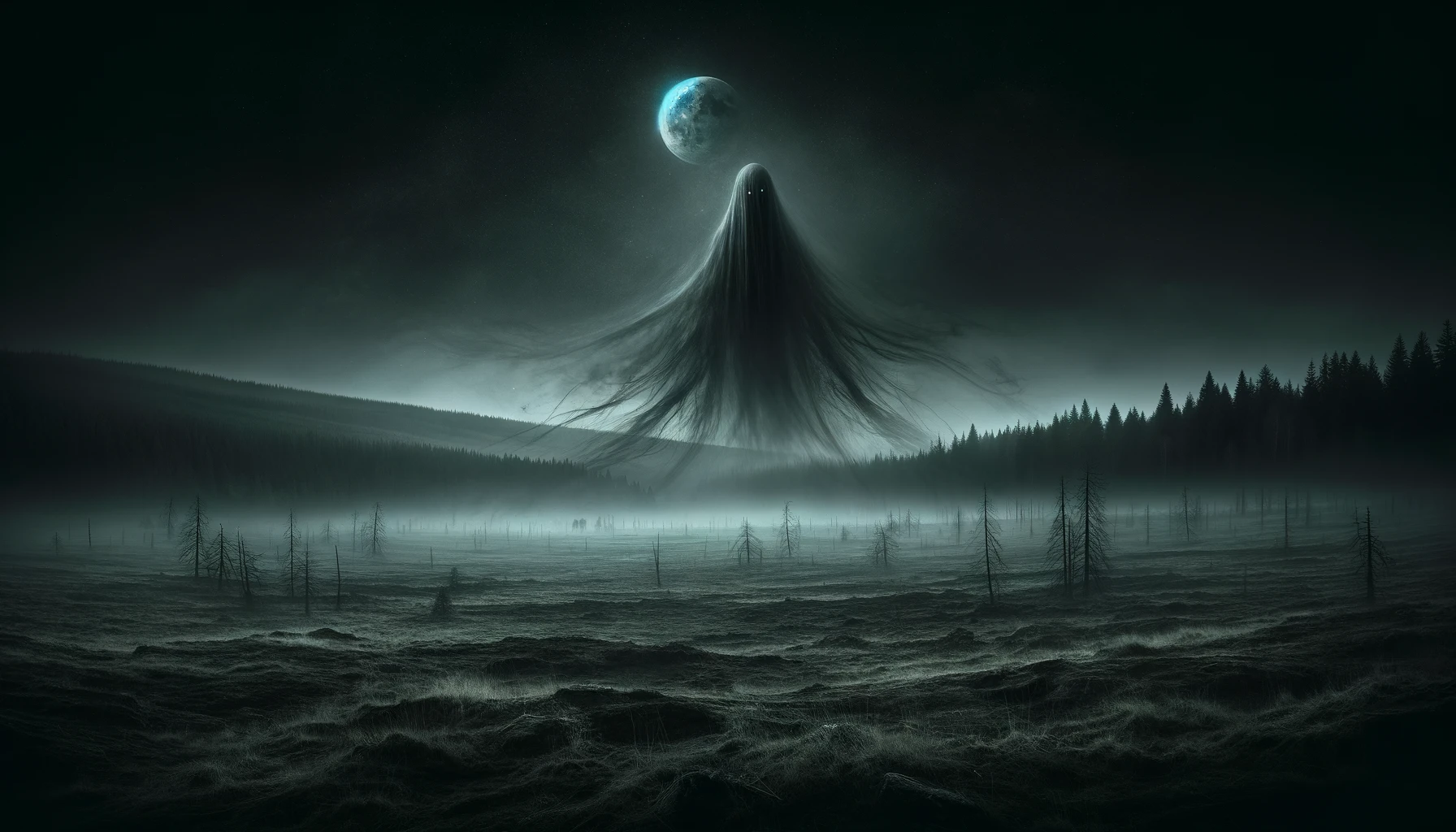Velmora, the Dark Moon spirit
Silent Shadow - The Mist’s Harbinger
The Whispered Moon
In the celestial dance of the twin moons, there moves a presence both whispered and feared—Velmora, spirit of the dark moon.. Unlike the radiant and poetic Arianrhod, who dances across the sky in silvered majesty, Velmora lurks in the periphery, a constant yet veiled force that humanity acknowledges but does not openly revere. In ancient times, when humanity first gazed upon the heavens, they spoke of the dark moon in hushed tones. It did not follow the same patterns as Arianrhod's predictable cycle but instead moved irregularly, its passage marked by strange omens and inexplicable occurrences. Crops withered beneath its baleful gaze, animals grew restless, and the air thickened with unease during its rise.A Spirit of Consequence
In contrast to Arianrhod, whose worship evolved into a more nuanced reflection of dreams, poetry, and transitions, Velmora remained in obscurity, feared more than loved. The few who dared invoke its name did so in times of desperation—whispered prayers before uncertain journeys, offerings left at the edge of the mist-covered lands, and secretive rites performed in the dead of night. Velmora was never a spirit of comfort, but one of inevitability and consequence. With each cycle of the moons, when the celestial bodies align and the world is veiled in the ethereal mist, Velmora is said to be at its strongest. The mist, unlike natural fog, carries an eerie stillness, swallowing sound and light, disorienting those caught within it. Legends tell of travelers lost forever, of villages where the mist settled too thickly, leaving only silence in its wake. To the common folk, the mist is a sign to bar doors and light protective lanterns, though deep down, they know such acts are meaningless against Velmora’s will. Some whisper it is not the mist itself that harms, but what stirs within it—things drawn from the edges of reality, summoned by the dark moon’s unseen pull. Others believe that the mist is Velmora’s breath, a force that erases boundaries between worlds, allowing echoes of the past or whispers of futures yet to come.The Spirit Without Doctrine
While Arianrhod's role was reshaped by The Holy Dominion to fit their doctrine, Velmora is conspicuously absent from religious scripture. The Dominion does not denounce it, nor do they acknowledge it. This has led to theories that The Church either fears the dark moon’s power or simply does not understand it. Some radical scholars claim that Velmora predates even the gods worshiped by men, an entity that does not conform to mortal theology. Though Velmora is feared, there are those who find reverence in its domain. The Druids, hermits, and certain scholars believe that to truly understand the world, one must embrace both light and darkness, knowledge and oblivion. They claim that Velmora does not destroy, but rather erases that which is no longer needed. Forgotten paths, lost memories, and secrets buried in time—these are its domain. Unlike the moon of dreams and rebirth, Velmora embodies the final erasure—not death, but the moment before something is lost forever.Superstitions & Folk Practices
The Silent Livestock:If livestock go silent during a mistfall, it is considered a sign Velmora has claimed something—often memory, sometimes more. “When the goats hush, shut the gate and mind your mind.” The Moon-Nailed Lantern
Travelers heading out during Velmora’s rise carry lanterns with a single silver nail driven into the base. It’s thought to keep the lantern's flame from being consumed by the mist, though the reason why the silver must face downward is never explained. “The light must shine, but the silver must bow.” The Shrouded Doll
In border hamlets, it’s common to keep a small faceless doll wrapped in gray cloth near doors or windows. Known as a Mistchild, it’s said to draw Velmora’s gaze, distracting her from the people within. “Let her see her own child, and she’ll leave yours alone.”



Comments